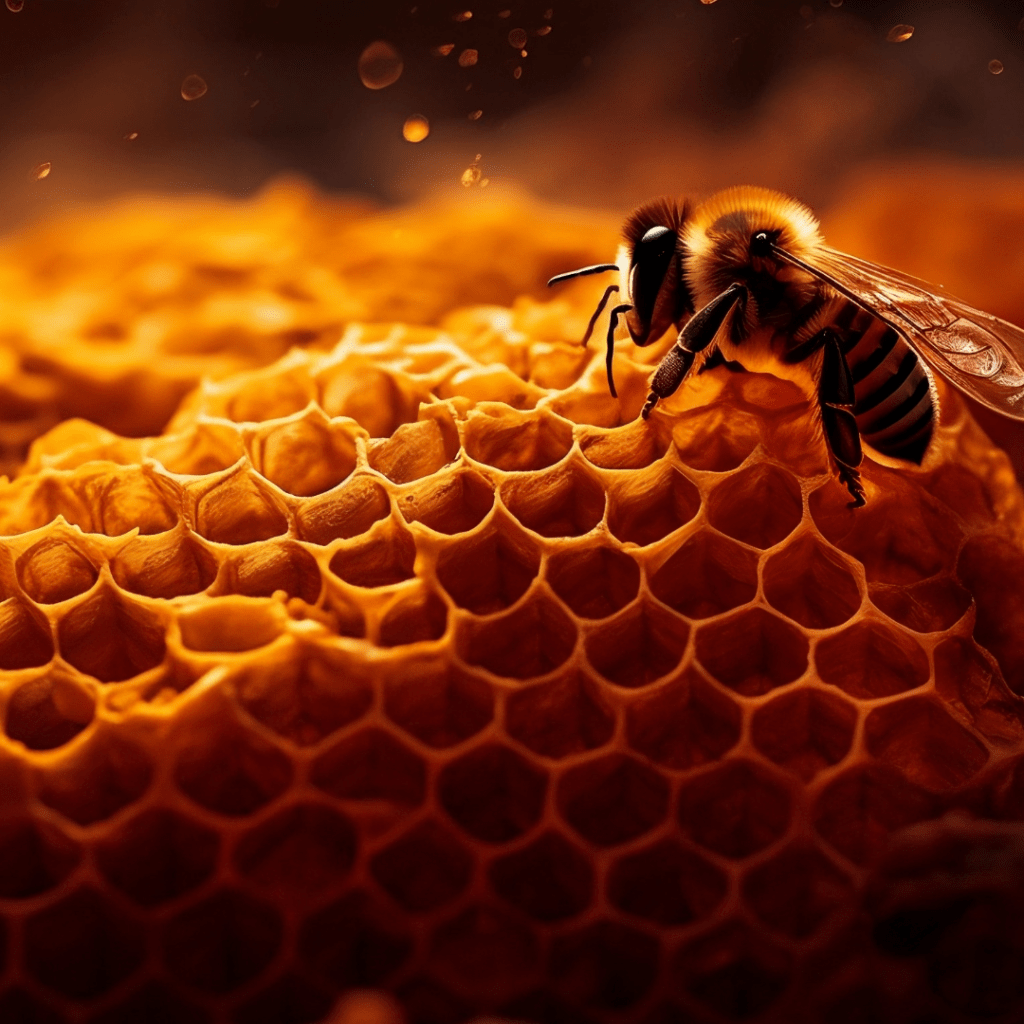Hive or bee house or impeccable laboratory that well represents how bees build orderly cells, collect nectar with precision and produce honey with great skill.
The hive encloses the essence of bee organization and productivity. Understanding how beehives work allows us to appreciate even more the crucial role that bees play for the entire ecosystem. But what exactly are they? Where are? And how do they work?
What is a beehive?
A hive is the home of bees but also an intricate system of alveoli, cells a hexagonal shape constructed with beeswax. Inside each hive lives the whole bee community and here, they work tirelessly to produce honey, feed larvae, store pollen and manage all the tasks to survive.
The internal organization of the hive is surprising. Bees regulate the temperature, ventilation and clean the hive with incredible precision.
When it does too much heat, the worker bees begin to "ventilate" the hive, flapping their wings to create air currents that promote cooling. If, however, it does too much Freddo, Bees curl up so their bodies can generate heat and maintain the right temperature inside.
This ability to adapt is fundamental to the survival and well-being of the entire colony.
Hives have different sizes depending on the species and quantity of bees and the conditions of the environment. Those of domestic honey bees can house thousands of bees and store several tens of kilograms of honey.
Where are the hives located?
Bees are always searching safe places and accessible to build their hives. They choose areas where they can find abundance of flowers or plants for nectar and pollen.
Furthermore, bee houses can be natural or artificial when they are created by man to grow honey and other bee products.
The natural hives they are often found inside tree cavities but also in cracks in rocks, building walls or among tree roots. The bees, taking advantage of all these cavities, build their hive, adapting it perfectly to the size and shape of the space they have available.
Beekeepers, however, can use different structures for their bees such as fixed hives or mobile, which allow easier access and better control of bee colonies.
Artificial hives are designed to maximize honey production, facilitate colony management and protect bees from external agents.
How are hives made?
The structure of a beehive is surprisingly organized. Worker bees build honeycombs with Beeswax secreted by their cereferal glands. These alveoli serve to store honey, feed the larvae and store the collected pollen.
The construction is a true masterpiece of natural engineering. There hexagonal arrangement of the alveoli allows you to optimize the space inside. Furthermore, the hexagonal-shaped structure offers greater resistance and stability even when full of honey or pollen. Furthermore, it requires less wax to build. This geometric organization is essential for the efficiency of the hive: it allows the bees not only to better conserve food reserves but also to guarantee a suitable space for the development of the larvae.
How to take care of bees
Inside the hive, bees maintain a constant temperature, generally around 32-35°C.
While the internal humidity is maintained around 50-60% to avoid the formation of mold in the honey.
Managing a beehive requires attention and knowledge. Beekeepers take care of the hives to ensure the health of the bees as well as the production of honey. This involves activities such as periodic inspection as well as protection from pathogens and predators.
Did you know that… curiosities from the hive
Bees are always ready to defend the hive in case of threat. At the entrance some bees have the task of acting as guardians. When they sense a potential danger, such as an intrusion by animals or other insects, bees may attack to defend the entire colony.
A single worker bee can to produce about one-twelfth of a teaspoon of honey over its lifetime, which can last from a few weeks to a few months. But, the working power of an entire colony can produce several kilos of honey during a harvest season.
Colonies can vary greatly number. A typical honey bee colony can host 20,000 to 60,000 bees during the spring or summer season, although this number can increase or decrease based on weather conditions and available resources.
Worker bees are capable of build thousands of alveoli inside the hive. It is estimated that the total surface area of the alveoli can reach several hundred square meters.
Producing the wax which is then used to build the alveoli requires a considerable energy expenditure by the bees, who consume large quantities of honey to produce it.
The bees, in addition to eliminating excess humidity to prevent it from fermenting, store the pollen in the alveoli, creating a sort of food storage internal.
Worker bees establish real bees shifts both to feed the larvae and to keep the alveoli clean.
Bees are essential for food production and the environment. Find out what we do at Apinfiore and what you can do for them! Click here on SOS API

